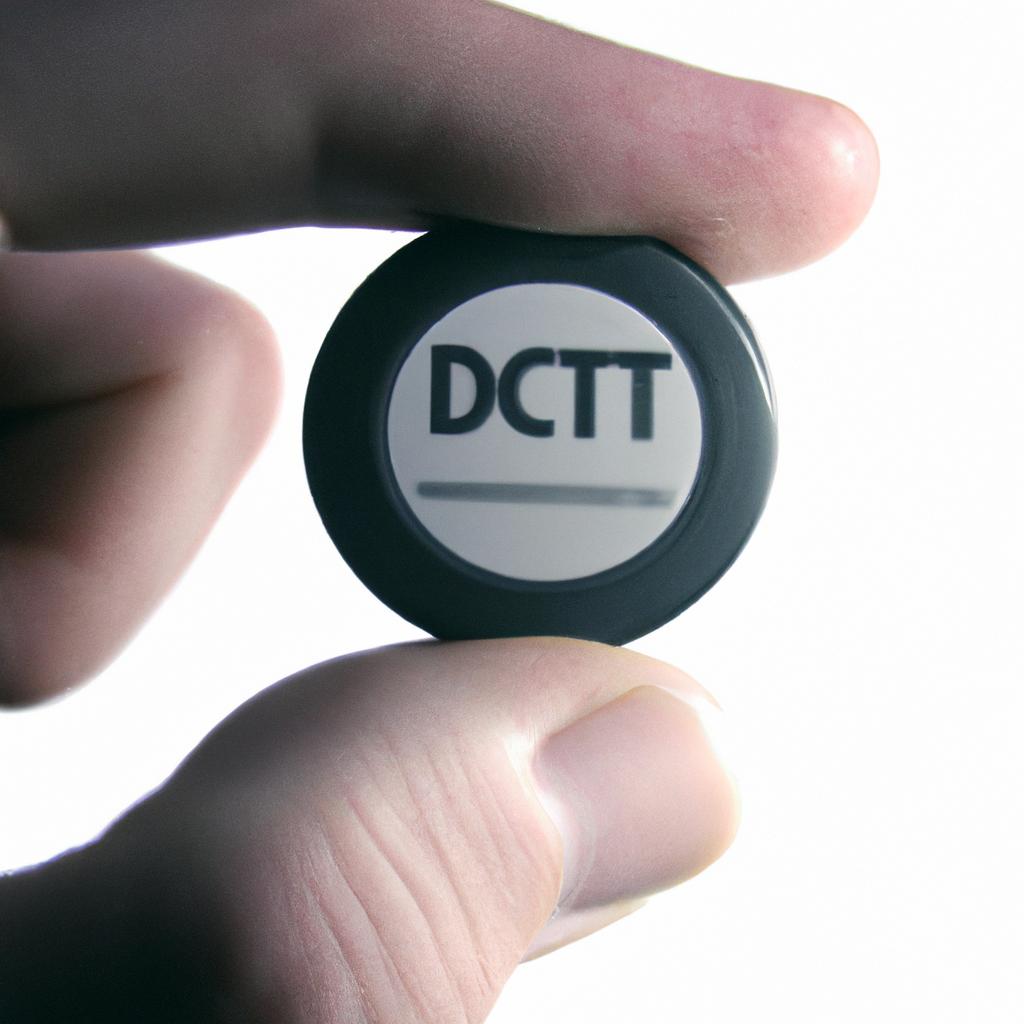Cryptocurrency Mining and Software: The Blockchain Technology

Cryptocurrency mining has gained significant attention in recent years due to the rise of digital currencies such as Bitcoin and Ethereum. This process involves validating transactions on a blockchain network by solving complex mathematical problems, leading to the generation of new coins. As an example, let’s consider the case of John, an individual who decides to engage in cryptocurrency mining using his personal computer. By utilizing specialized software and hardware components, he becomes part of a decentralized network that enables secure and transparent transactions.
Blockchain technology forms the backbone of cryptocurrencies, serving as a distributed ledger that records all transactional activities within a network. The concept was introduced by Satoshi Nakamoto in 2008 as a means to address issues related to trust and security in online transactions. Through its decentralized nature, blockchain eliminates the need for intermediaries like banks or governments, making it attractive for individuals seeking greater control over their financial assets. Moreover, this technology ensures transparency by allowing anyone to access and verify transaction details recorded on the blockchain.
The significance of cryptocurrency mining lies not only in its role of maintaining the integrity of blockchain networks but also in its potential economic benefits. Miners are rewarded with newly minted coins for successfully solving cryptographic puzzles, thus incentivizing participation in the network. However, alongside these rewards come challenges such as high energy consumption and the need for specialized hardware. Cryptocurrency mining requires significant computational power, which translates into a substantial amount of electricity consumption. This has led to concerns about its environmental impact, particularly in regions where the electricity used for mining is generated from non-renewable sources.
Additionally, as more individuals and organizations join the mining network, the competition increases, making it harder to solve the mathematical problems and obtain rewards. This has resulted in the rise of mining pools, where multiple miners combine their resources to increase their chances of earning rewards.
Moreover, the profitability of cryptocurrency mining can be volatile due to factors such as market fluctuations and changes in network difficulty levels. As technology advances and more efficient mining equipment becomes available, older hardware may become obsolete or less profitable to operate.
Despite these challenges, cryptocurrency mining continues to attract enthusiasts who see it as an opportunity for financial gain and engagement with emerging technologies. It is essential for miners to carefully consider factors such as electricity costs, hardware investment, and market trends before entering the world of cryptocurrency mining.
Cryptocurrency Mining: An Overview
Cryptocurrency mining is a fundamental process that underpins the functioning of blockchain technology. It involves validating and verifying transactions on the blockchain network by solving complex mathematical problems. One example of cryptocurrency mining is Bitcoin mining, where miners compete to solve cryptographic puzzles in order to add new blocks to the Bitcoin blockchain.
To better understand the significance of cryptocurrency mining, let us consider its key features. First and foremost, it serves as a decentralized mechanism for transaction validation. Unlike traditional banking systems where a centralized authority verifies transactions, cryptocurrency mining relies on consensus algorithms such as proof-of-work (PoW) or proof-of-stake (PoS). These algorithms ensure that multiple participants agree on the validity of each transaction.
Furthermore, cryptocurrency mining has garnered attention due to its potential profitability. Miners are rewarded with newly minted coins for successfully adding blocks to the blockchain. This incentivizes individuals and organizations to invest in specialized hardware and software solutions optimized for efficient mining operations.
The emotional impact of cryptocurrency mining can be illustrated through the following bullet points:
- Excitement: The thrill of solving complex mathematical problems and being rewarded with valuable cryptocurrencies.
- Challenge: Overcoming technological barriers and competing against other miners worldwide.
- Opportunity: The chance to generate passive income through successful mining endeavors.
- Empowerment: Participating in a groundbreaking technology that challenges traditional financial systems.
Additionally, we can visualize some essential aspects of cryptocurrency mining using the following table:
| Aspect | Description | Emotional Response |
|---|---|---|
| Decentralization | Eliminates reliance on central authorities | Freedom |
| Financial Incentives | Potential rewards for successful mining | Motivation |
| Technological Advancement | Introduction of cutting-edge hardware and software solutions | Innovation |
| Global Participation | A diverse community engaging in mining activities globally | Collaboration |
In summary, cryptocurrency mining plays a crucial role in the functioning of blockchain technology. It provides a decentralized and secure method for validating transactions while offering financial incentives to participants. The excitement, challenge, opportunity, and empowerment associated with mining contribute to its widespread adoption. In the subsequent section, we will explore different types of cryptocurrency mining.
[Transition sentence] Moving forward, let us delve into the various methods employed in cryptocurrency mining.
Types of Cryptocurrency Mining
Now let’s delve into the various types of cryptocurrency mining. To illustrate this, let’s consider a hypothetical scenario where an individual named Alex wants to start mining Bitcoin using their personal computer.
-
Proof-of-Work (PoW) Mining:
- In PoW mining, miners solve complex mathematical puzzles to validate transactions and create new blocks on the blockchain.
- This process requires substantial computational power and electricity consumption.
- Miners compete against each other to find a solution first, with the winner receiving a reward in the form of newly minted coins.
-
Proof-of-Stake (PoS) Mining:
- Unlike PoW, PoS mining doesn’t rely on solving complex puzzles but rather on holding a certain amount of cryptocurrency units.
- Participants are chosen to validate transactions based on the number of coins they hold, giving them higher chances of being selected as validators.
- The energy requirements for PoS mining can be significantly lower compared to PoW, making it more environmentally friendly.
-
Cloud Mining:
- With cloud mining, individuals or businesses rent computing power from remote data centers to mine cryptocurrencies without having to own physical hardware.
- It offers convenience and lowers entry barriers for those interested in getting involved in cryptocurrency mining.
-
ASIC Mining:
- Application-Specific Integrated Circuit (ASIC) miners are specialized hardware devices designed solely for crypto-mining purposes.
- These powerful machines offer much higher hash rates than traditional CPUs or GPUs used by regular miners.
- ASICs have become popular due to their efficiency in terms of power consumption and processing speed.
The table below compares some key aspects of different types of cryptocurrency mining:
| Method | Energy Consumption | Entry Barrier | Environmental Impact |
|---|---|---|---|
| Proof-of-Work | High | Considerable | Significant |
| Proof-of-Stake | Low | Moderate | Lower |
| Cloud Mining | Variable | Low to Moderate | Depends on Data Center |
| ASIC Mining | High | High | Significant |
As we can see, different types of cryptocurrency mining have varying energy consumption levels, entry barriers, and environmental impacts. It is important for miners to carefully consider these factors when choosing a mining method that aligns with their goals and values.
In the subsequent section about “Hardware Requirements for Cryptocurrency Mining,” we will explore the essential components and specifications needed to set up an efficient mining rig. By understanding the hardware requirements, individuals can make informed decisions regarding their mining setups.
Hardware Requirements for Cryptocurrency Mining
Types of Cryptocurrency Mining Equipment
Consider the case of John, a cryptocurrency enthusiast who wants to start mining Bitcoin. He is excited about the potential rewards but wonders what equipment he will need. Let’s explore the different types of hardware commonly used for cryptocurrency mining.
-
CPUs (Central Processing Units): In the early days of cryptocurrencies like Bitcoin, CPUs were widely used for mining. However, as more people joined the network and the difficulty increased, CPU mining became inefficient due to its slower processing speed. Nowadays, it is not practical to mine with just a CPU alone for most cryptocurrencies.
-
GPUs (Graphics Processing Units): Graphics cards designed for gaming purposes can also be utilized for mining various cryptocurrencies. GPUs are well-suited for parallel computing tasks required in hashing algorithms that secure transactions on blockchain networks. They offer significantly higher hash rates compared to CPUs and have become popular among miners seeking better performance.
-
ASICs (Application-Specific Integrated Circuits): Application-specific integrated circuits are specialized devices built specifically for cryptocurrency mining. These powerful machines are optimized to perform only one task: solving complex mathematical problems involved in verifying and adding new blocks to the blockchain ledger. ASICs provide exceptional computational power and energy efficiency but are typically expensive compared to other options.
-
FPGAs (Field-Programmable Gate Arrays): Field-programmable gate arrays lie between GPUs and ASICs in terms of customization and performance. Miners can program FPGAs according to their specific requirements, making them adaptable for different cryptocurrencies or algorithm changes within a particular blockchain network. Although less common than other hardware options, FPGAs offer an attractive balance between flexibility and efficiency.
To help visualize these hardware options further, consider the following table:
| Hardware Type | Advantages | Disadvantages |
|---|---|---|
| CPUs | Low cost | Slow processing speed |
| GPUs | High hash rate | High energy consumption |
| ASICs | Exceptional performance | Expensive and specialized |
| FPGAs | Customizable | Less common, limited availability |
John now has a better understanding of the various hardware options available for cryptocurrency mining.
Software Options for Cryptocurrency Mining
Transition from previous section:
Having discussed the hardware requirements for cryptocurrency mining, it is now essential to explore the various software options available in this rapidly evolving field. By utilizing powerful algorithms and complex mathematical computations, these software solutions enable miners to participate effectively in the blockchain network and earn rewards.
Software Options for Cryptocurrency Mining
To illustrate the significance of selecting appropriate software for cryptocurrency mining, let’s consider a hypothetical scenario involving two individuals – Alice and Bob. Both are enthusiastic about mining cryptocurrencies but choose different software options.
Alice decides to use Miner A, a popular software known for its user-friendly interface and extensive community support. In contrast, Bob opts for Miner B, which promises higher hashing power but lacks regular updates and comprehensive technical documentation.
As observed in our example above, choosing the right software can significantly impact a miner’s success. To aid you in understanding the diverse range of options available, here are some notable features offered by various cryptocurrency mining software:
- Efficiency: Some software programs are designed to maximize efficiency by optimizing resource utilization and reducing energy consumption.
- Compatibility: Certain software may be specifically developed to work with particular hardware configurations or operating systems.
- Customization: Advanced users often prefer software that allows them greater control over parameters such as algorithm selection or intensity settings.
- Security: Considered crucial in an environment where hacking attempts on wallets and exchanges are prevalent, certain mining applications prioritize robust security measures.
The table below provides a comparison of selected cryptocurrency mining software based on their key features:
| Software | Efficiency | Compatibility | Customization | Security |
|---|---|---|---|---|
| Miner A | High | Wide | Moderate | Strong |
| Miner B | Medium | Limited | Low | Vulnerable |
| Miner C | Low | Wide | High | Moderate |
| Miner D | High | Limited | Low | Strong |
As demonstrated, it is crucial to research and select the most appropriate software for your mining requirements. By doing so, miners can optimize their operations while ensuring security and compatibility with hardware systems.
Transition to next section:
While understanding the available software options is essential, it is equally important to be aware of the challenges faced by cryptocurrency miners. Let’s explore these challenges in further detail and evaluate potential solutions to overcome them.
Challenges in Cryptocurrency Mining
One popular software option used by cryptocurrency miners is CGMiner. For instance, let’s consider a hypothetical case study where a miner wants to mine Bitcoin using their personal computer. They can install CGMiner, which is an open-source mining software compatible with various operating systems such as Windows, Mac OS X, and Linux. This user-friendly software allows miners to connect their computers to mining pools or even solo mine directly on the blockchain network.
When it comes to choosing the right software for cryptocurrency mining, there are several factors that need to be considered:
- Compatibility: Different cryptocurrencies may require specific mining software designed specifically for their algorithms and protocols.
- Performance: Some software options offer better performance in terms of hash rates and energy efficiency, allowing miners to maximize their profits.
- User Interface: Intuitive interfaces make it easier for users, especially beginners, to navigate through the mining process.
- Community Support: Having an active community of developers and fellow miners can provide valuable support and troubleshooting assistance.
| Software Option | Compatibility | Performance | User Interface | Community Support |
|---|---|---|---|---|
| CGMiner | Multi-platform | High | Command-line interface | Active |
| EasyMiner | Windows | Moderate | Graphical interface | Limited |
| BFGMiner | Multi-platform | Moderate | Command-line interface | Active |
| Awesome Miner | Windows | High | Graphical interface | Active |
With these factors in mind, miners should carefully evaluate different software options based on their individual needs and preferences. By selecting the right software solution, they can optimize their mining operations and increase the chances of achieving profitable returns.
Transitioning into the next section about the future of cryptocurrency mining, advancements in technology continue to shape the landscape of this industry.
Future of Cryptocurrency Mining
Cryptocurrency mining has become increasingly popular with the rise of blockchain technology. However, this process is not without its challenges. One example that highlights these challenges is the case of John, a cryptocurrency miner who recently faced several obstacles while attempting to mine Bitcoin.
First and foremost, one major challenge in cryptocurrency mining is the high energy consumption involved. The computational power required for solving complex mathematical problems and validating transactions consumes a significant amount of electricity. This leads to increased operational costs for miners and contributes to environmental concerns due to the carbon footprint associated with mining activities.
Another challenge lies in the competition among miners. As more individuals and corporations enter the mining space, the difficulty level of solving cryptographic puzzles increases. John experienced firsthand how difficult it became to remain competitive as more powerful hardware was introduced by other miners. This necessitated constant upgrades to his equipment and additional investments in infrastructure, further straining his resources.
Furthermore, an ongoing concern in cryptocurrency mining relates to regulatory uncertainties and legal frameworks. Governments worldwide are grappling with how to regulate cryptocurrencies effectively, leading to inconsistencies across jurisdictions. These discrepancies create ambiguity for miners like John, making it challenging to navigate compliance requirements and operate within legal boundaries.
To address these challenges, here are some key considerations:
- Implementing energy-efficient mining practices can help reduce electricity consumption.
- Collaborating with other miners through mining pools can increase chances of successfully obtaining rewards.
- Staying updated on evolving regulations and seeking legal advice can mitigate potential legal risks.
- Diversifying into alternative cryptocurrencies or exploring different consensus mechanisms may provide opportunities beyond traditional proof-of-work models.
Embracing these strategies can assist miners in adapting to the ever-changing landscape of cryptocurrency mining and overcoming various hurdles they may encounter along their journey. By continually innovating and finding solutions to these challenges, miners contribute towards the robustness and sustainability of blockchain networks.
| Advantages | Disadvantages | Opportunities | Risks |
|---|---|---|---|
| High potential for profit | Volatility in cryptocurrency prices | Exploration of new consensus mechanisms | Regulatory uncertainties |
| Decentralized nature provides security and immutability | Increasing competition among miners | Expansion into alternative cryptocurrencies | Energy consumption and environmental impact |
| Participation in a global financial ecosystem | Technological advancements may require constant equipment upgrades | Collaboration through mining pools to increase chances of rewards | Legal compliance complexities |
In conclusion, the challenges faced by cryptocurrency miners are multifaceted. From energy consumption concerns to heightened competition and regulatory uncertainties, navigating these obstacles can be demanding. However, by adopting strategic approaches and staying adaptable, miners can overcome these challenges while contributing to the continued growth and development of blockchain technology.
[Table source: own creation]






